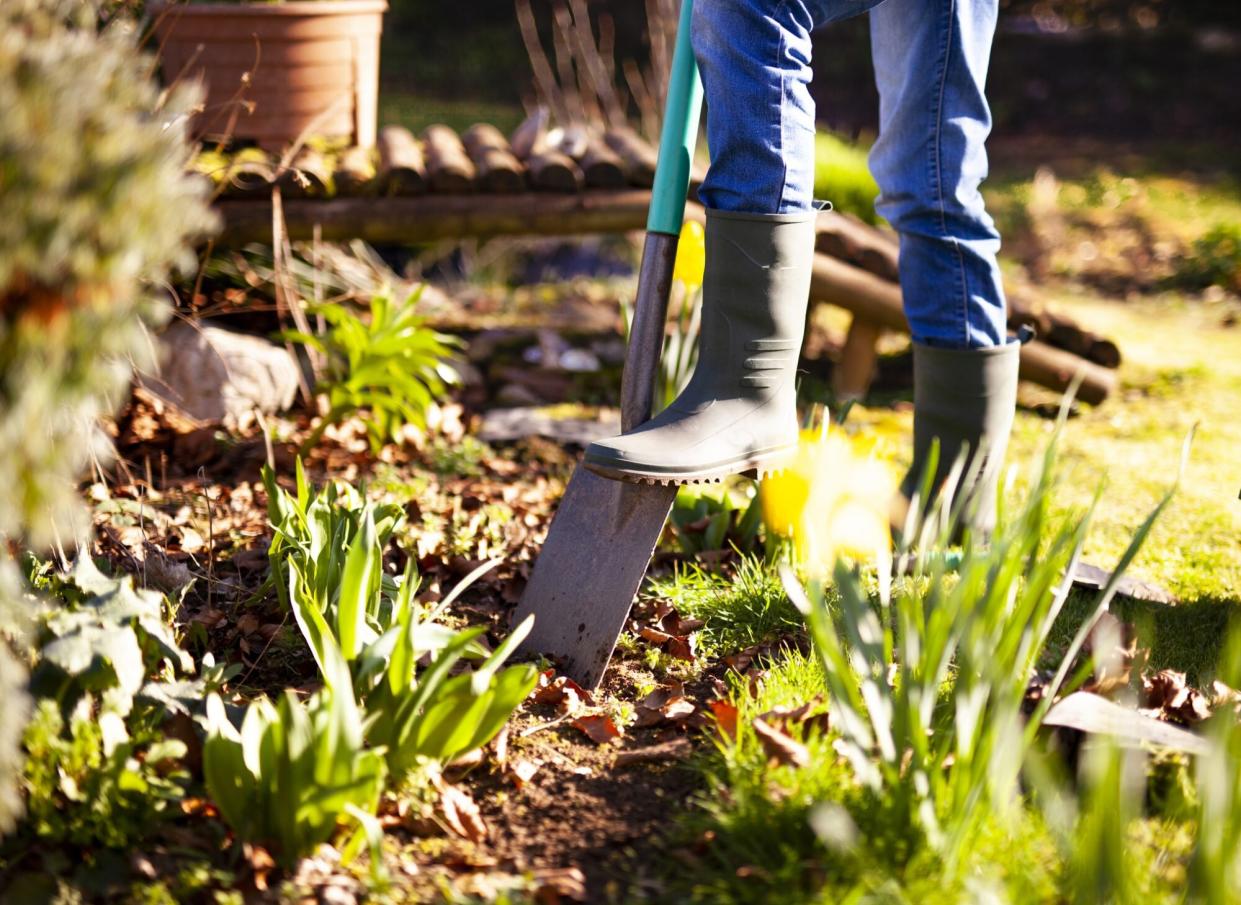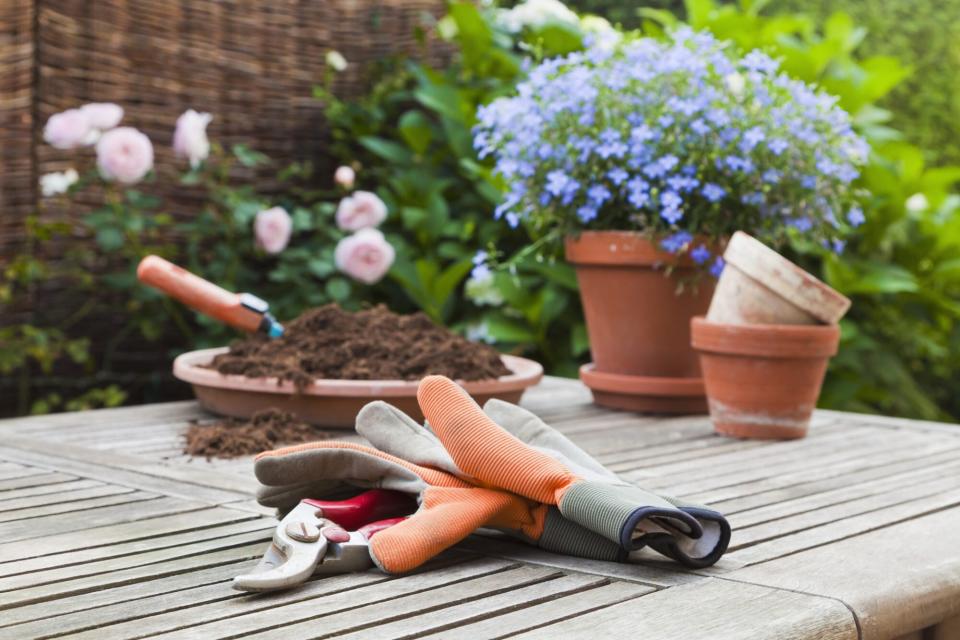How to Prepare Your Garden Soil for Planting

GETTY IMAGES
TABLE OF CONTENTS
On This Page
What Healthy Soil Looks Like
How to Check Your Soil Texture
Types of Soil Amendments
How to Amend Your Soil
How to Check Your Soil Drainage
How to Check Your Soil pH
Must-Have Garden Tools
Healthy soil is the key to happy plants. Whether you're about to create your first garden from scratch or beginning to prep existing beds for the coming growing season, take the time to check your soil and make it the nutrient-rich home your green babies deserve.
No matter the season, garden size, or level of gardening expertise, consider this your guide to all things soil—from what to know about it (i.e. what healthy soil looks like and the types and textures available) to how to maintain a thriving garden (like how to check the drainage, how to keep healthy soil, and more). Follow along each step, and when you get to the end and your soil is officially ready for planting, be sure to bookmark this page for the start of next season. After all, a happy garden starts with a good foundation, so you want to get this right.
What Healthy Soil Looks Like
Healthy garden soil supports plant roots and gives them access to nutrients, water, and air. It's fast draining yet moisture retentive, neither too dense nor too loose. Most roots grow in its upper layer (topsoil), which is especially biologically active—home to earthworms, microbes, and other beneficial organisms.
In the topsoil, earthworms improve drainage and aeration as they tunnel, while their castings add nutrients. And organic matter such as ground bark and vegetable matter decomposes, creating a soft, dark substance called humus. Below the topsoil is the subsoil. Although it contains plant nutrients, it's not as hospitable to roots as the topsoil. Improving your topsoil can have the most beneficial effect on plant health. To achieve healthy topsoil, treat your planting beds with organic amendments, or grow cover crops to add organic material to the soil and loosen it. Organic gardeners prefer natural fertilizers, which provide a more sustained release of nutrients and encourage beneficial soil-dwelling organisms.
How to Check Your Soil Texture
All soils contain mineral particles formed by the natural breakdown of rock (as well as varying amounts of organic matter, air, and water). The size and shape of these particles determine the soil's texture, whether clay, sandy, or loam.
Thoroughly wet a patch of soil; let it dry out for a day.
Pick up a handful of soil, and squeeze it firmly in your fist.
It is predominantly clay if it forms a tight ball and feels slippery.
It's sandy if it feels gritty, doesn't hold its shape, and crumbles when you open your hand.
It's loam if it is slightly crumbly but still holds a loose ball.
Amend the soil as needed. The amendments listed below are typically sold at nurseries in 1- or 2-cubic-ft. bags, and in bulk at building suppliers. You'll need a cubic yard of organic material to cover 100 square feet of planting bed to a depth of about 3 inches.
Types of Soil Amendments
Compost
Made from grass clippings, chopped leaves, and other garden trimmings, it's easy to produce, it's good for your garden, and it lightens the load at landfills. You can purchase compost at a garden center or make your own. See our guide to composting.
Manure
Containing more plant nutrients than some other amendments, manures can also contain high concentrations of soluble salts, which can harm plant roots, so never use fresh manure. Use only manure that has been composted for a year and does not come from animals grazed on pastures treated with herbicides, as these chemicals pass through the animals unaltered and can kill your plants. Composted cow manure contains a good balance of nutrients, is widely available in bags at your local garden center, and does not smell bad.
Wood Products
Ground bark is useful in clay soils; it helps separate fine clay particles. But it can take nitrogen from the soil as it decomposes (add nitrogen along with it for best plant growth). Some wood products, such as soil conditioner, can be purchased already fortified with nitrogen; check the labels to be sure. Never use fresh wood chips.
Sphagnum Peat Moss
It helps acidify the soil, but there are concerns over the damage that may result from the overmining of some peat bogs. A coir fiber by-product of the coconut fiber industry is similar in texture; it's sold in bales, bricks, and discs that expand when soaked in water to make 5 to 10 quarts of fluffy material. Coir fiber won't help acidify the soil the way peat does.
How to Amend Your Soil
Dampen the soil thoroughly, and allow it to dry for a few days before you dig. Don't try to work soil that's too wet or too dry.
Dig to a depth of about 10 inches. Break up dirt clods and remove any stones or debris as you go. In small areas, use a spading fork; for larger beds, try a rotary tiller.
Add fertilizer now as well. Spread it over the soil, using the amount indicated on the label. Then work it into the topsoil where it will have the greatest benefit.
Mix with a spading fork or tiller, incorporating the amendments evenly into the soil.
Level the bed with a rake, breaking up any remaining clods of earth.
Water well; let the improved soil settle for at least a few days before planting.
TIP: One way to enrich your soil without adding amendments is to grow cover crops. Cover crops are natural soil enrichers. Legumes such as clover, ryegrass, and vetch also add nitrogen to the soil, thanks to their association with nitrogen-fixing bacteria that "fix" nitrogen in nodules in the legume's roots. Sow cover crops in the fall in prepared soil, in rows 1 foot apart and about 3 inches deep. In spring, before flowers set seed, cut or mow the crop down and till it into the soil. Allow a couple of days, till again. Rake smooth, and plant. When the plants decompose, the nitrogen is released back into the soil.
How to Check Your Soil Drainage
Poor drainage causes water to remain in the pore spaces, so air—necessary to roots and beneficial soil-dwelling organisms—is unable to enter the soil. Soil texture and a low-lying location can contribute to poor drainage, as can running heavy machinery over the soil and walking on planting areas. The best way to improve soil drainage is to work in large amounts of organic matter. You can also regrade the area so that excess water drains off. Or create raised beds above the problem soil and fill them with good soil.
How to Check Your Soil pH
Soil pH is a measure of how soil ranges from acid through neutral to alkaline. A pH of 5 to 7.2 is ideal for most plants. Soil with a pH of 7 is neutral—neither acid nor alkaline. A pH below 7 indicates acidity, while one above 7 indicates alkalinity. If the pH is extreme in either direction, key nutrients are chemically "tied up" in the soil and not available to plant roots.
Acid Soil: Acid soil typically occurs throughout the Southeast and East Texas—regions with heavy rainfall and soils high in organic matter, although limestone deposits form some pockets of alkaline soil. Most plants thrive in mildly acid soil, but highly acid soils can be inhospitable.
Alkaline Soil: Found in Texas and Oklahoma where rainfall is relatively light and other spots as well, this soil is high in calcium carbonate. Many plants grow well in moderately alkaline soil. Others, including camellias and azaleas, do not.
Salty Soils: Usually found near the seashore, salty soils also can result from the overuse of fertilizers and fresh manures. Salty soil pulls water from plant roots, making it difficult for plants to take up enough moisture or nutrients. Symptoms include scorched and yellowed leaves or browned and withered leaf margins.
If you're not sure whether your soil is acid or alkaline, or if you suspect your soil is deficient in some nutrients, check it using a simple test kit from the nursery. For a more precise reading, have the test done at a laboratory. Once you know the pH of your soil, you can adjust as necessary. For acid soil, raise pH by adding lime. For alkaline soil, you can lower soil pH by adding sulfur. And to treat salty soil, add organic matter and flood the soil periodically to wash away the salts.

GETTY IMAGES
Must-Have Garden Tools
These five tools are the most useful for working the soil. If you're serious about starting and maintaining a healthy garden, you need the right gear for the job.
Round-point shovel: Loosens soil, transfers soil to a pile or wheelbarrow, and digs planting holes.
Garden spade: Prepares soil for planting and digs narrow, straight-sided trenches.
Spading fork: Great for loosening and turning soil, working with manure, and turning compost.
Soil rake: Breaks up clods of dirt, levels the soil, tamps seedbeds to make them firm, and works amendments into the top few inches of a planting bed.
Trowel: Plants and cultivates. Also scoops fertilizers and amendments from bags.
With your soil in tiptop shape, you're ready to start adding your plants. Happy planting!

